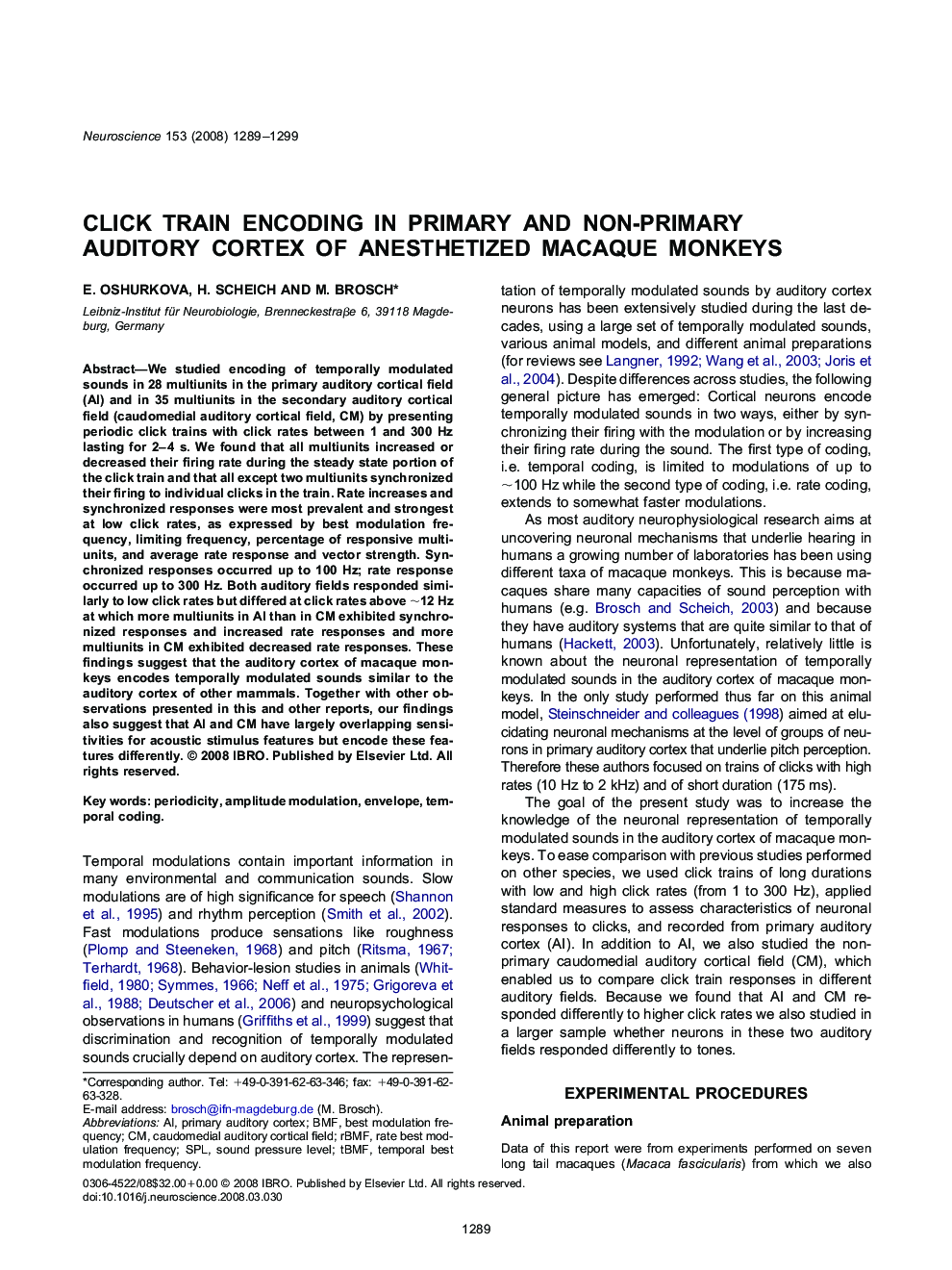| Article ID | Journal | Published Year | Pages | File Type |
|---|---|---|---|---|
| 4341798 | Neuroscience | 2008 | 11 Pages |
We studied encoding of temporally modulated sounds in 28 multiunits in the primary auditory cortical field (AI) and in 35 multiunits in the secondary auditory cortical field (caudomedial auditory cortical field, CM) by presenting periodic click trains with click rates between 1 and 300 Hz lasting for 2–4 s. We found that all multiunits increased or decreased their firing rate during the steady state portion of the click train and that all except two multiunits synchronized their firing to individual clicks in the train. Rate increases and synchronized responses were most prevalent and strongest at low click rates, as expressed by best modulation frequency, limiting frequency, percentage of responsive multiunits, and average rate response and vector strength. Synchronized responses occurred up to 100 Hz; rate response occurred up to 300 Hz. Both auditory fields responded similarly to low click rates but differed at click rates above ∼12 Hz at which more multiunits in AI than in CM exhibited synchronized responses and increased rate responses and more multiunits in CM exhibited decreased rate responses. These findings suggest that the auditory cortex of macaque monkeys encodes temporally modulated sounds similar to the auditory cortex of other mammals. Together with other observations presented in this and other reports, our findings also suggest that AI and CM have largely overlapping sensitivities for acoustic stimulus features but encode these features differently.
